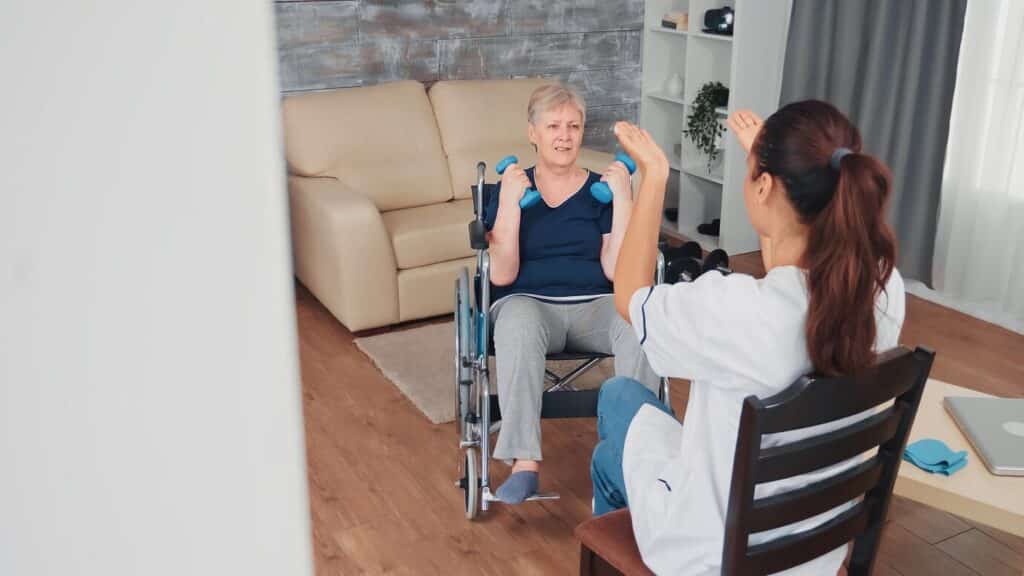Understanding Sensory Therapies in Memory Care
The Role of Sensory Stimulation in Memory Care
At Westmont of Carmel Valley, we recognize the significant impact of sensory therapies on individuals with memory impairments. Sensory therapies involve activities and treatments that stimulate the senses – sight, sound, touch, taste, and smell. These therapies are particularly beneficial in memory care, as they can help improve cognitive function, reduce agitation, and enhance overall well-being.
The Science Behind Sensory Therapies
Research shows that sensory stimulation can activate different parts of the brain, encouraging neural pathways to remain active and engaged. This is crucial for individuals with memory issues, as it helps slow the progression of cognitive decline. Sensory therapies also provide emotional comfort, reducing feelings of anxiety and loneliness, which are common in memory care patients.
Implementing Sensory Therapies at Westmont of Carmel Valley
Customized Sensory Activities
At our San Diego, CA facility, we customize sensory activities to meet the individual needs of our residents. This personalization is key to the effectiveness of the therapies. Activities range from listening to music and engaging in tactile arts and crafts to aromatherapy sessions and tasting different flavors.

Customized Sensory Activities
The Impact of a Multi-Sensory Environment
We have created a multi-sensory environment at Westmont of Carmel Valley. This includes rooms designed to stimulate specific senses in a controlled manner. For instance, a sensory room might have soft lighting, soothing music, and textured walls to provide a calming experience, which is particularly beneficial for residents who may feel overwhelmed by too much stimulation.
The Benefits of Sensory Therapies in Memory Care
Cognitive and Emotional Benefits
Sensory therapies offer a range of cognitive and emotional benefits. They can help improve memory recall, enhance mood, and increase social interaction. For instance, listening to music from one’s youth can trigger memories and emotions, fostering a sense of identity and personal history.
Physical Health Benefits
These therapies also have physical health benefits. Engaging in sensory activities can improve motor skills, coordination, and even appetite. For example, gardening activities can help with hand-eye coordination, while cooking activities can stimulate appetite and improve nutritional intake.
Enhancing Quality of Life
Ultimately, the goal of sensory therapies at Westmont of Carmel Valley is to enhance the quality of life for our residents. By providing stimulating and enjoyable activities, we can help our residents feel more connected to the world around them, reducing feelings of isolation and improving overall well-being.
Tailoring Sensory Therapies to Individual Needs
Personalized Sensory Profiles
At Westmont of Carmel Valley, we understand that each resident has unique needs and preferences. That’s why we develop personalized sensory profiles for each individual. This approach ensures that the sensory activities we offer are enjoyable and therapeutically beneficial for each resident.
Involving Family in Sensory Care
Family involvement is a crucial aspect of our approach. We encourage families to share insights about their loved one’s preferences and past experiences. This information helps us tailor sensory activities in a way that is comforting and resonant with the resident’s personal history.
Sensory Therapies and Memory Care Technology
Integrating Technology in Sensory Stimulation
Technology in sensory therapies represents a significant advancement in memory care. Our San Diego facility utilizes tools like virtual reality to provide immersive sensory experiences. These technologies can transport residents to different places and times, aiding in memory recall and providing a stimulating and engaging experience.
Continuous Innovation and Research
Our commitment to providing the best care includes staying abreast of the latest sensory therapy and memory care developments. We continuously explore new technologies and methods to enhance the sensory experiences of our residents, ensuring that our approaches are based on the latest research and best practices.
Training and Expertise in Sensory Therapy
Staff Training and Expertise
Our Westmont of Carmel Valley staff are trained in the latest sensory therapy techniques. They understand the importance of these therapies in memory care and are skilled in implementing them in a way that maximizes their benefits. This expertise is a cornerstone of the high-quality care we provide.
Ongoing Education and Development
We also invest in ongoing education and professional development for our staff. This commitment ensures that our team is equipped with the knowledge and skills to provide our residents with the most effective sensory therapies.
Community Engagement and Sensory Therapies
Involving the Broader Community
Community involvement is integral to our approach. We partner with local organizations and volunteers to bring our residents a diverse range of sensory experiences. This engagement enriches our sensory therapy program and fosters a sense of connection between our residents and the broader San Diego community.
Events and Activities
We regularly host events and activities that involve sensory stimulation, such as music performances, art exhibitions, and culinary events. These occasions provide opportunities for social interaction and enjoyment, further enhancing the quality of life for our residents.
Addressing Challenges in Sensory Therapy
Overcoming Sensory Overload
While sensory therapies offer numerous benefits, addressing the potential for sensory overload is important. Our Westmont of Carmel Valley team is trained to recognize signs of discomfort or distress and adjust sensory activities accordingly. This ensures a safe and comfortable experience for every resident.
Adapting to Changing Needs
As memory care needs to evolve, so do our sensory therapy approaches. We continually assess and adapt our methods to align with the changing needs of our residents. This adaptability is crucial for providing consistent, high-quality care.
The Role of Environment in Sensory Therapy
Designing Sensory-Friendly Spaces
The design of our facility plays a key role in our sensory therapy program. We’ve carefully crafted stimulating and calming spaces with attention to colors, textures, and lighting. These elements create an environment that supports the therapeutic goals of our sensory activities.
Safe and Nurturing Atmosphere
Creating a safe and nurturing atmosphere is paramount. Our facility is designed to be a haven where residents can explore and engage with their senses in a secure and comforting setting. This environment is essential for the well-being of individuals with memory impairments.
The Future of Sensory Therapy in Memory Care
Innovations and Trends
Looking ahead, we are excited about the potential for new innovations in sensory therapy. From advancements in technology to emerging research on sensory stimulation, we are committed to incorporating these developments into our program at Westmont of Carmel Valley.
Commitment to Excellence
Our commitment to providing exceptional memory care through sensory therapies is unwavering. We strive for excellence, ensuring that our residents receive the best possible care and quality of life.
Enhancing Lives Through Sensory Therapies
At Westmont of Carmel Valley, our dedication to enhancing the lives of those with memory impairments through sensory therapies is at the heart of everything we do. Our approach is grounded in understanding, innovation, and compassion, ensuring that each resident experiences a life enriched with joy and engagement.
Join Us in Our Journey
Suppose you or your loved one could benefit from our expert memory care and sensory therapy program. In that case, we invite you to join us on this journey. Contact us at 858-465-7356 to learn how we can enhance the quality of life for those with memory impairments. We can create a nurturing and stimulating environment that celebrates each individual’s journey.









